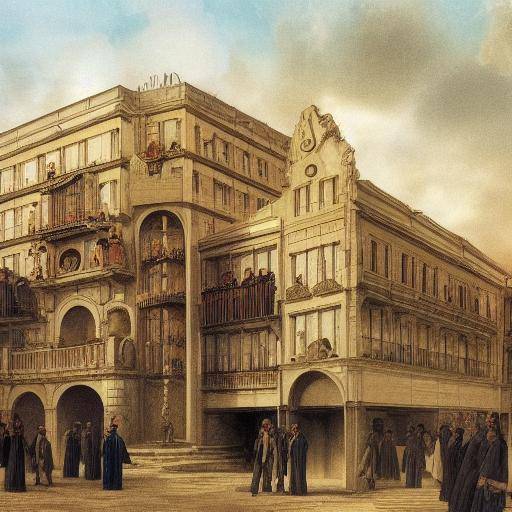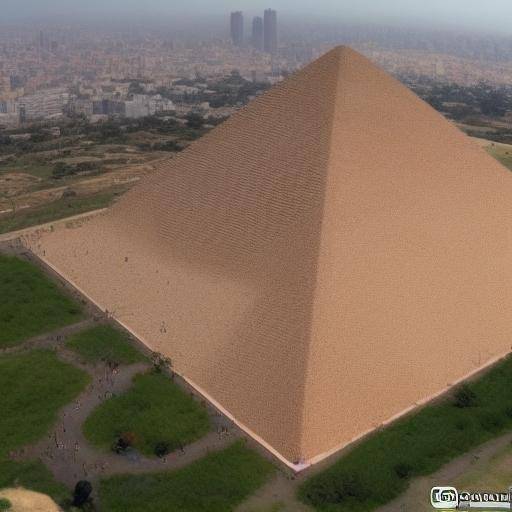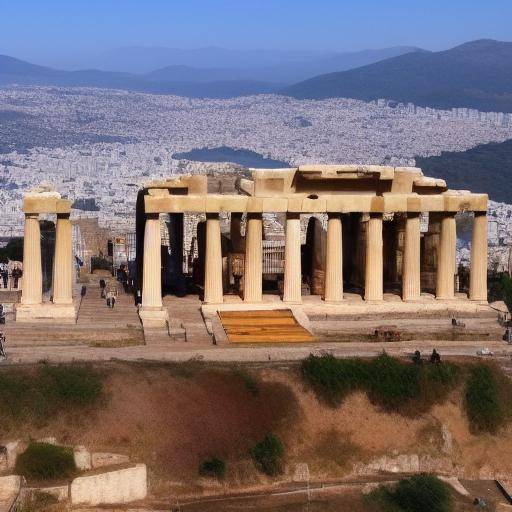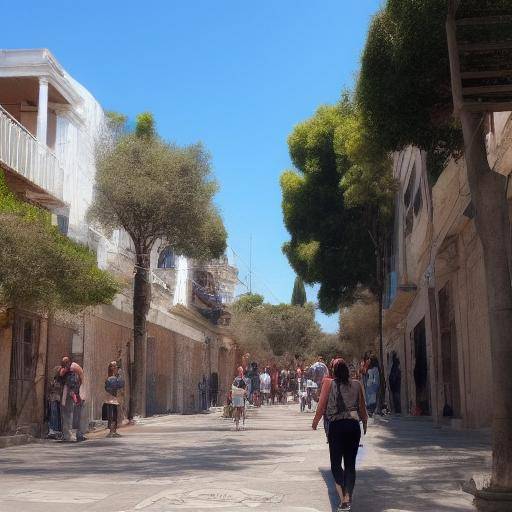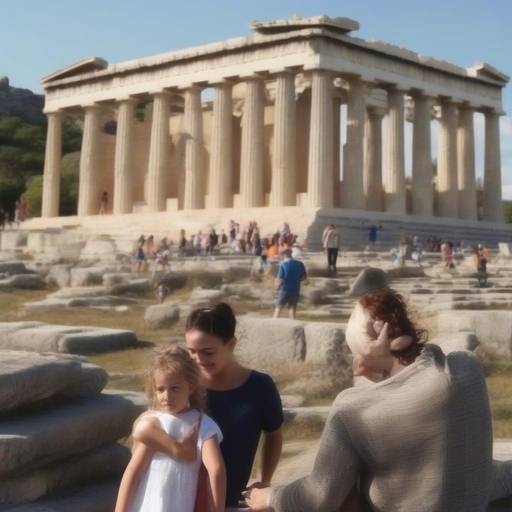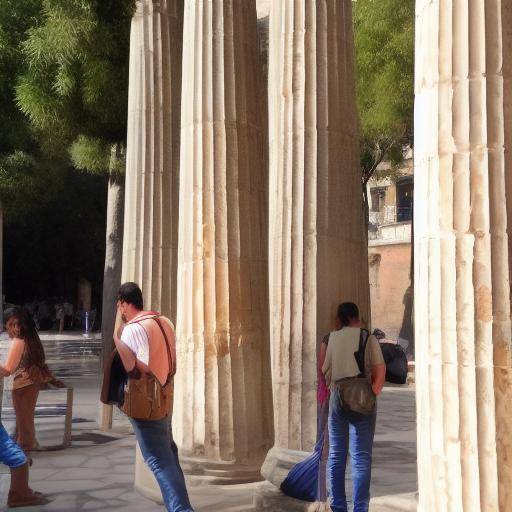
The Parthenon of Athens is an architectural wonder that has endured over the centuries, captivating visitors from all over the world. This article will take you through history, ancient architecture and cultural wealth that is found in every column of this emblematic structure. From its construction in the Acropolis of Athens to its modern relevance, you will discover all the beauty and grandeur of this iconic monument.
Introduction
Ancient wonder and contemporary attraction
Since its construction in the 5th century BC, the Parthenon has been a symbol of the greatness of Greek civilization. Its innovative design and imposing presence in the Acropolis of Athens make it an unparalleled tourist attraction. Join us on a virtual journey to the heart of ancient Greece, where we will discover the long-lasting legacy of the Parthenon and its impact on the modern world.
History and Background
Origins and Construction
The Parthenon, built between 447 and 438 BC, was dedicated to the goddess Athena, protector of Athens. The structure, designed by the architects Ictinos and Calícrates, represents the apogee of the classical Greek architecture, with its distinctive doric style and its decorative sculptural friezes. Its construction was carried out during the apogee of Athenian democracy, thus reflecting the wealth and power of the city.
Evolution and Meaning
Over the centuries, the Parthenon has survived invasions, conflicts and natural disasters. Despite significant damage, the monument has been restored on several occasions, thus preserving its legacy. Its meaning as a symbol of democracy and artistic excellence has resonated throughout history, serving as a source of inspiration for future generations.
Durable impact
The legacy of the Parthenon transcends its own walls, influencing architecture, art and culture around the world. Its lasting impact on contemporary architectural design, sculpture and cultural practices. [LINK: Cultural Legacy of the Parthenon]
Analysis in Deep
Benefits and Challenges
The Partenón, as a cultural and tourist landmark, brings many benefits to Athens, generating economic revenues and promoting historical heritage. However, the management and preservation of this iconic monument present significant challenges, such as structural degradation and tourist pressure.
Current Perspectives and Reviews
The debate about the repatriation of the Parthenon sculptures, known as the Elgin Marbles, has generated international controversy. Several actors advocate their return to Greece, while others defend their location at the British Museum. [LINK: Elgin Marbles]
Comprehensive review
Applications and Best Practices
Sustainable management of World Heritage, such as the Parthenon, is crucial to ensuring its long-term preservation. This includes conservation strategies, cultural diffusion and responsible tourism. [LINK: Sustainable Heritage Management]
Industrial Perspectives and Expert Reviews
The impact of tourism in the Partenón and its environment has been a topic of discussion among experts in heritage management. Sustainability and conservation are key aspects in safeguarding this invaluable legacy.
Comparative analysis
Parthenon, Athens and Ancient Architecture
The Partenon, Athens and the ancient architecture as a whole represent the cusp of human achievement in terms of architectural design, engineering and artistic expression. Their similarities and differences reveal the diversity and creativity that has characterized ancient civilizations. By exploring these connections, we can appreciate the depth of your cultural legacy and its influence on the modern world.
Practical Tips and Accessible Tips
Planning of the Visit to the Parthenon
If you are planning to visit the Partenón, it is advisable to book your entry in advance, especially in the months of the greatest tourist influx. Make sure you wear comfortable footwear and sun protection, as the visit to the Acropolis of Athens involves walking and sun exposure.
Exploring Athens
Take advantage of your visit to the Partenón to explore other archaeological and cultural sites in Athens, such as the Dionisio Theatre, the Ancient Agora and the Acropolis Museum.
Respect for Heritage
Remember to show maximum respect for historical heritage during your visit. It follows the indications and conservation standards to contribute to the preservation of the Parthenon and its environment.
Industrial Perspectives and Expert Reviews
Interviews with Archaeology Experts
We have had the privilege of discussing with outstanding archaeologists and experts in classical art, who share their views on the importance of the Partenón in the context of the preservation of world heritage.
Future Trends and Predictions
Current trends aim at a more holistic approach to cultural heritage management, incorporating digital technologies, environmental awareness and community participation. The future of the Parthenon and its legacy will depend on how we address these emerging challenges and opportunities.
Conclusions and FAQs
Conclusion
The Parthenon of Athens remains an amazing monument that arouses admiration and respect throughout the world. His lasting legacy and cultural influence continue to resonate today, serving as a reminder of artistic excellence and human ingenuity.
Frequently asked questions
What is the meaning of the sculptural frieze of the Parthenon?
The frieze of the Parthenon represents the procession of the Great Panthena, a religious festival in honor of the goddess Athena. The sculptures show a detailed narrative of ancient mythology and everyday life in classical Greece.
How has the Parthenon been restored over the years?
The restoration of the Parthenon has been a continuous process involving the reconstruction of damaged elements, structural stabilization and protection against air pollution.
What is the impact of tourism in the Partenón and its environment?
Tourism has generated significant economic benefits, but it has also raised challenges in terms of conservation, visitor management and preservation of the environment.
Why are Elgin's Marbles so controversial?
The Elgin Marbles, once part of the Parthenon, have been a matter of controversy because of their acquisition by the United Kingdom and the debate on their repatriation to Greece.
What is the importance of the Partenón in the history of art and architecture?
The Partenón is considered one of the most outstanding examples of classical Greek architecture and has influenced countless artistic and architectural movements throughout history.
This article has provided an integral vision of the Parthenon of Athens, from its construction to its contemporary relevance. By exploring its influence on ancient architecture, history and culture, we hope to have taken you to a journey in the time that has allowed you to appreciate the greatness of this iconic monument and its lasting legacy in the modern world. In the hope of enriching your understanding and appreciation for the Parthenon and its historical context, we encourage you to continue exploring the wealth of ancient Athens and its cultural legacy. Thank you for accompanying us on this journey!
Remember, if you have any additional questions, do not hesitate to consult our FAQs or contact us. Happy journey!
Note: This article is only for illustrative purposes and does not intend to replace professional advice or guidance. For detailed information on the visit to the Parthenon, specialized and official sources are recommended.

